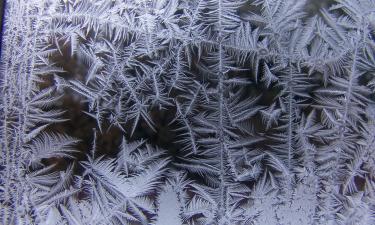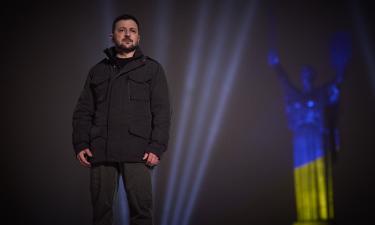New microbe discovered in Yellowstone ponds
An unusual bacterium that converts light into energy was discovered at Yellowstone National Park.
The discovery was made in a hot spring at the park where colorful mats of microbes drift in the warmth.
"This thing was just bizarre," David M. Ward, a professor of microbial studies at Montana State University, said of the bacterium.
Plants use photosynthesis to turn light into energy, of course, and so do some other bacteria.
But, Ward said, the newly discovered type has "a new kind of photosynthesis. It uses the same kind of machinery, but has the parts in a different arrangement."
The find is going to be important for unraveling the history of photosynthesis, in determining how microbes efficiently harvest energy, he said in a telephone interview.
"We're running out of fossil fuel, so the more efficiently we can harvest light energy the better," Ward said.
Discovery of the microbe, named Candidatus Chloracidobacterium thermophilum, is reported in Friday's issue of the journal Science.
"Finding a previously unknown, chlorophyll-producing microbe is the discovery of a lifetime," co-author Don Bryant, a professor of biotechnology at Penn State University, said in a statement. "I wouldn't have been as excited if I had reached into that mat and pulled out a gold nugget the size of my fist!"
Yellowstone is home to many types of heat-loving bacteria and scientists have studied it for years in search of new organisms that may be useful in biotechnology or medicine.
Indeed, these ponds have been studied for 40 to 50 years, Ward said, and yet they can still discover a completely new organism.
The researchers discovered the bacterium living in the same hot springs where the microbe Thermus aquaticus had been found previously.
T. aquaticus was crucial in making the polymerase chain reaction a routine procedure. PCR is used to amplify genetic material for testing and research.
There are other chlorophyl-producing microbes, but the new one - Cab. thermophilum - is a completely different type than the others that are known, the researchers said.
The mats of microbes give the Yellowstone hot springs a variety of colors including yellow, orange, red, brown and green.
Cab. thermophilum grows near the surface of the mats together with other bacteria or blue-green algae, at a temperature of about 122 degrees (50 Celsius) to 151 degrees Fahrenheit (66.11 Celsius).
It was found in three hot springs, Mushroom Spring, Octopus Spring and Green Finger Pool in the Lower Geyser Basin.
The researchers said the new bacterium has light-harvesting antennae known as chlorosomes, which contain about 250,000 chlorophylls each. It is the first aerobic microbe known to make chlorosomes.
Cab. thermophilum makes two types of chlorophyll that allow these bacteria to thrive in microbial mats and to compete for light with other bacteria.
Judging from their genetic sequences, the closest relatives of Cab. thermophilum are found around Mammoth Hot Springs in Yellowstone and hot springs in Tibet and Thailand, according to the researchers.
The research was funded by the National Science Foundation and the U.S. Department of Energy.
Subscribe to Pravda.Ru Telegram channel, Facebook, RSS!




